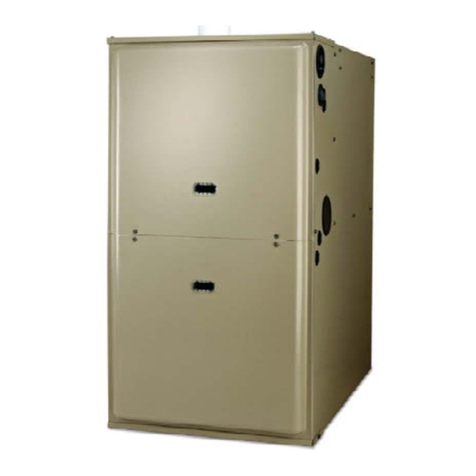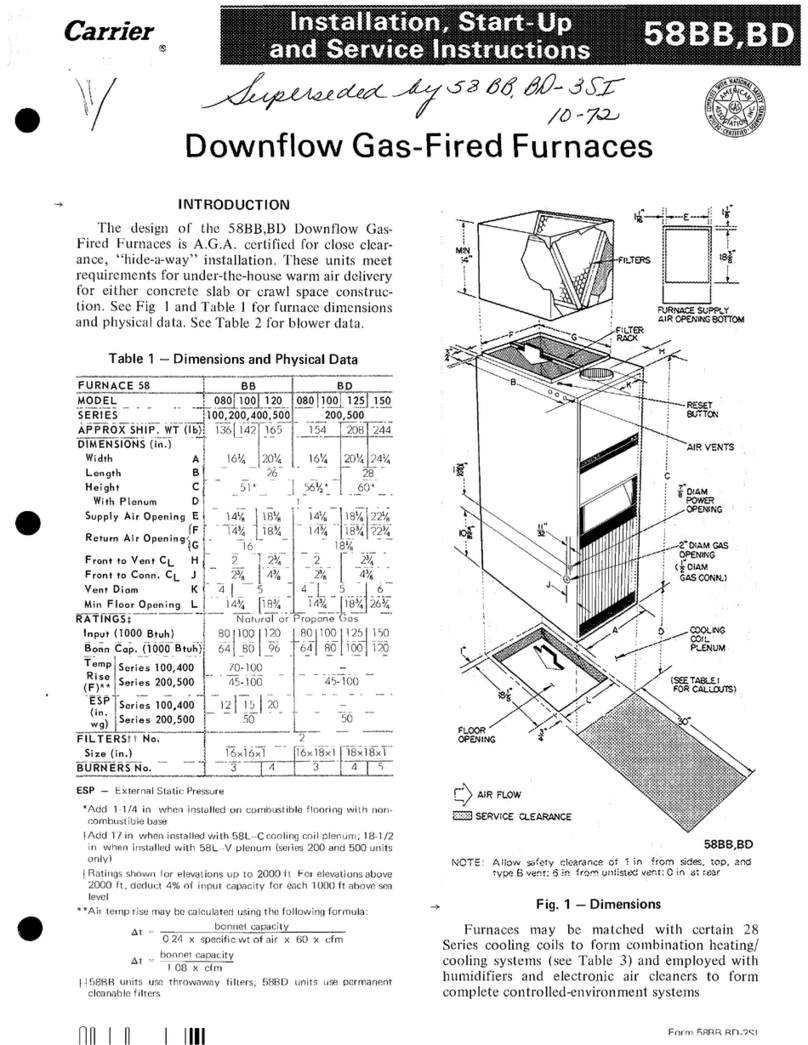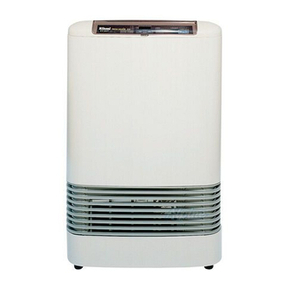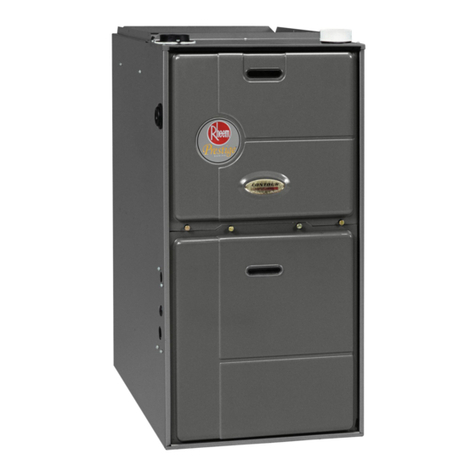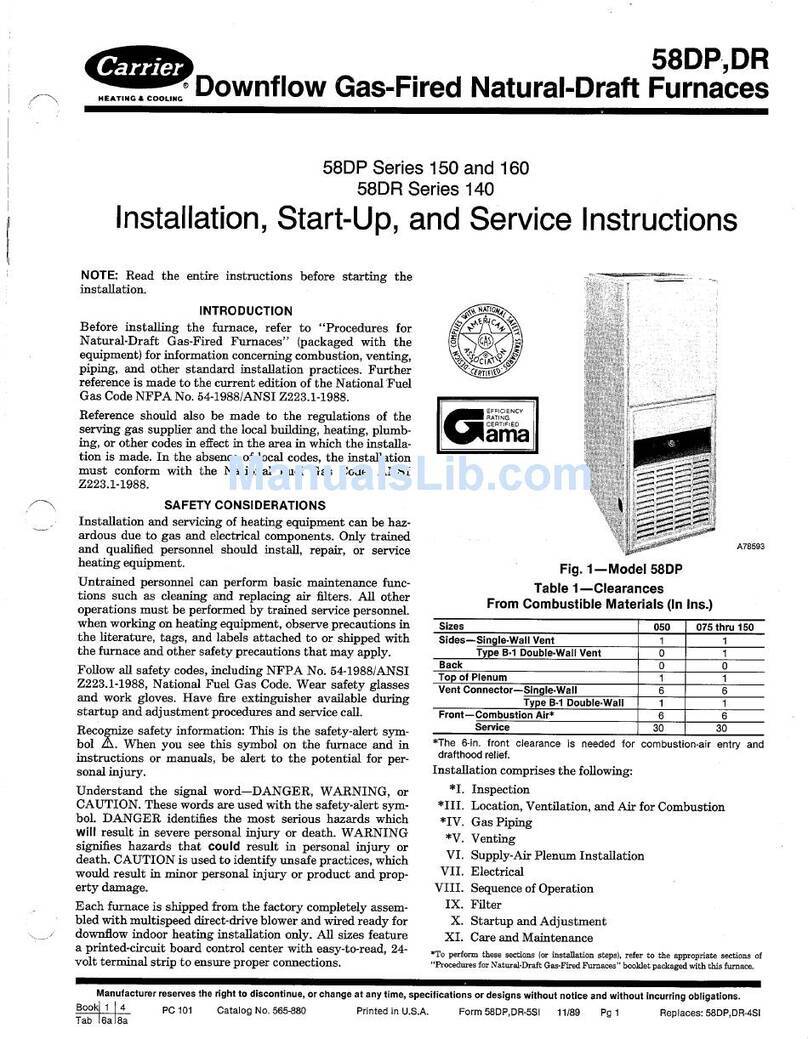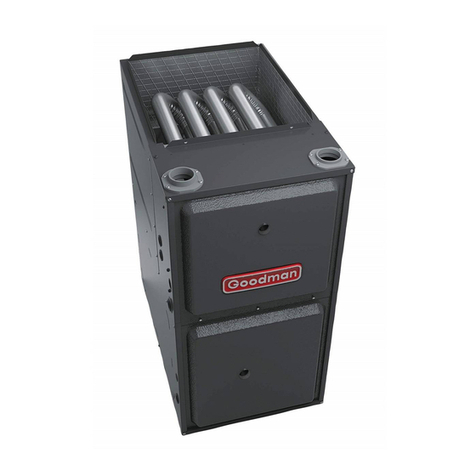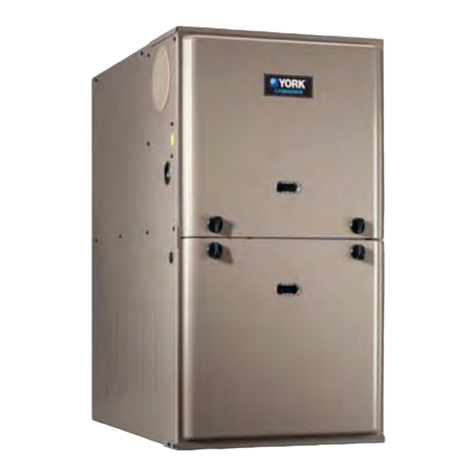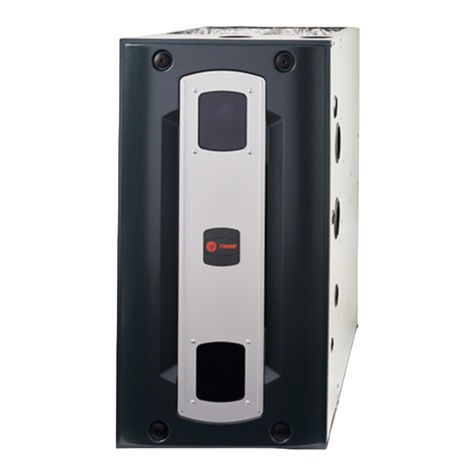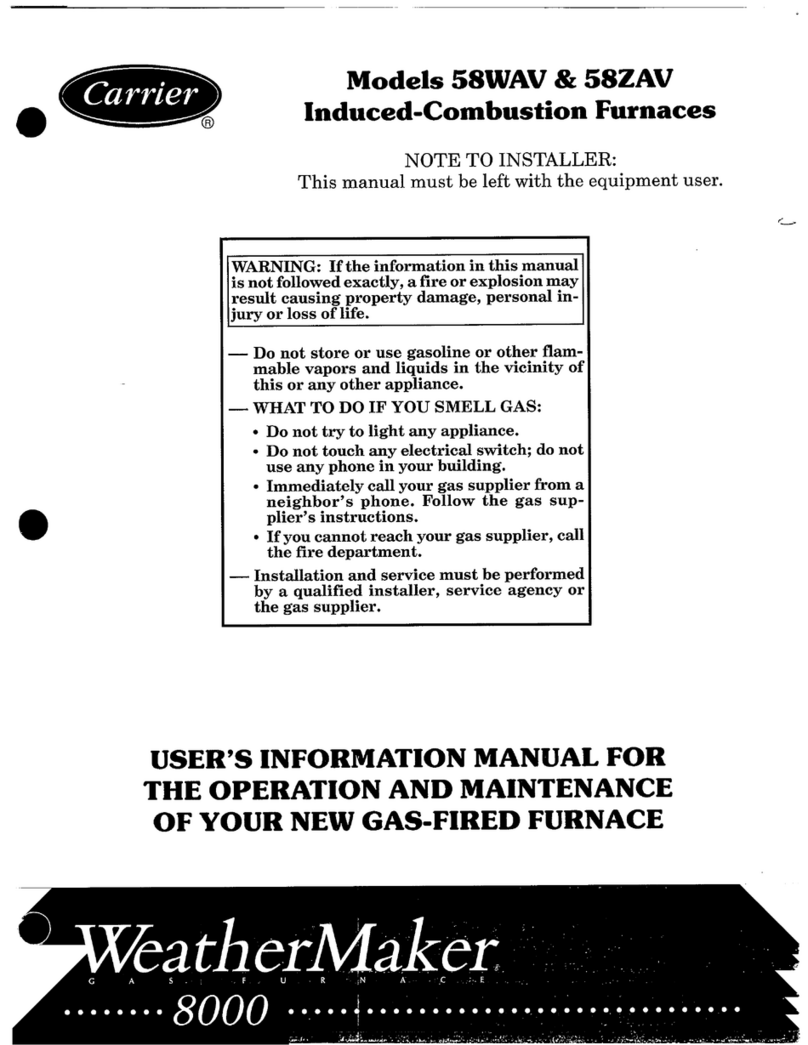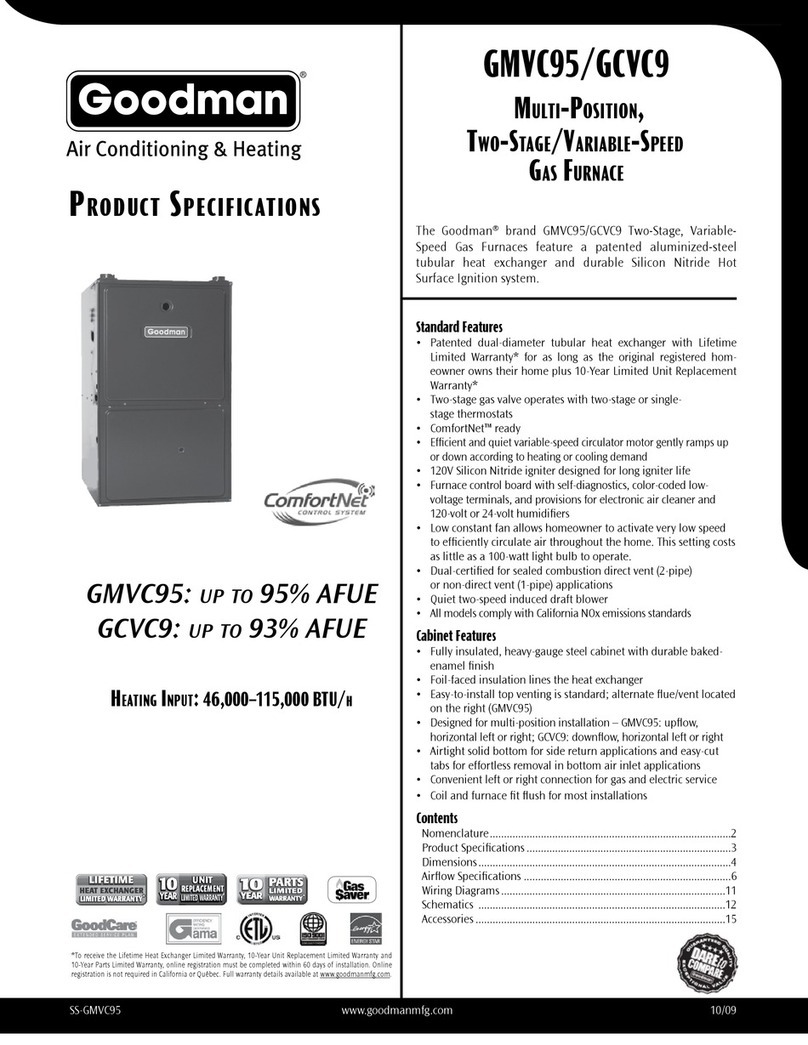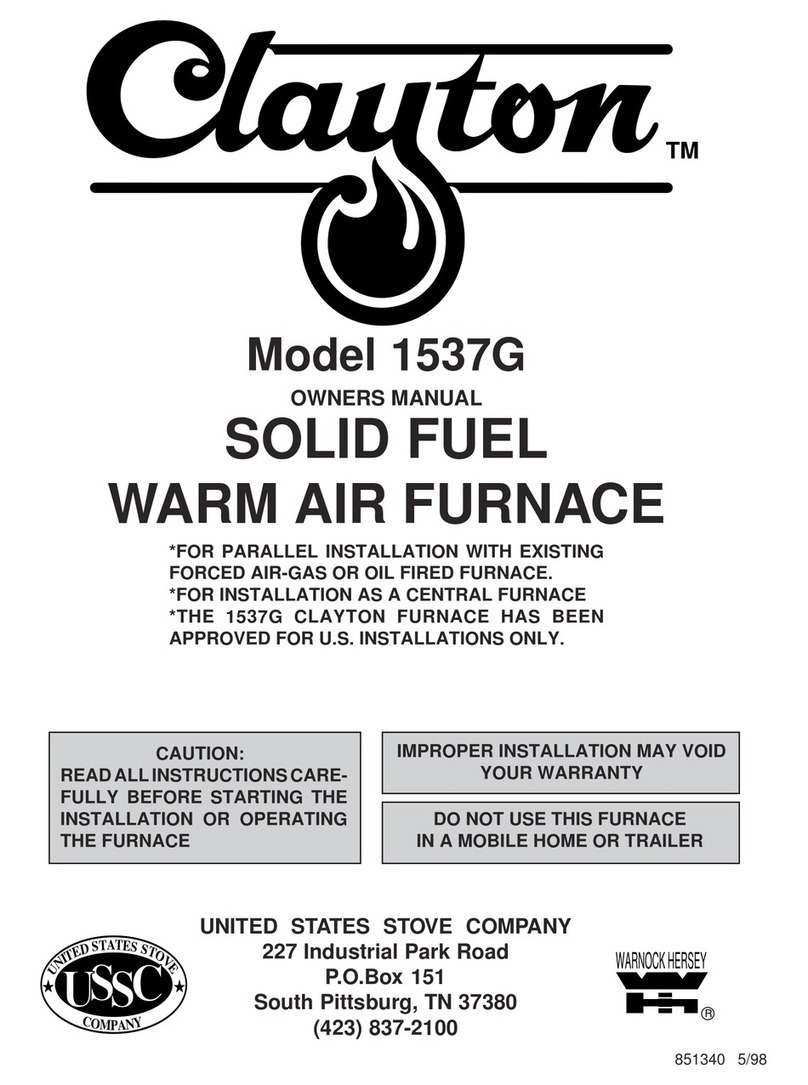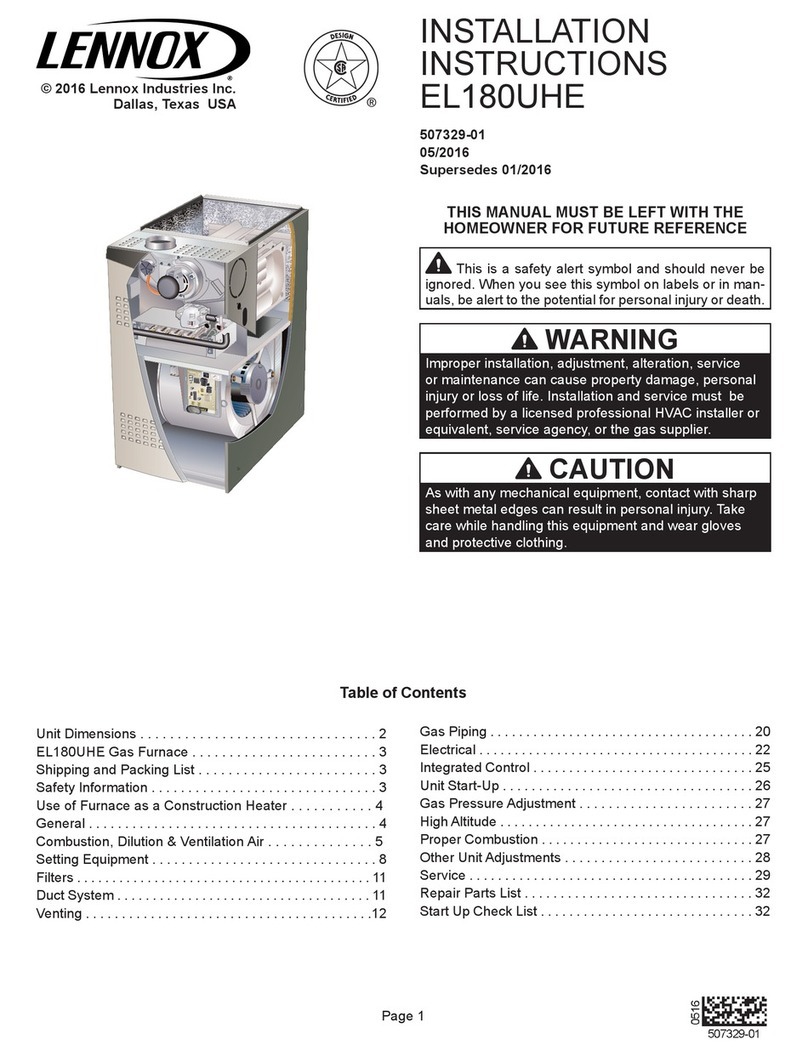
Page2 USSC
Your new furnace must be installed into a
This type of chimney consists of a ue lined brick chimney, or an
approved “Class A” all fuel factory built (prefabricated) type. Any
other installation guarantees an immediate re hazard.
Do not install the furnace into the same chimney serving other
appliances.
When using 8” ue pipe, the chimney should have an 8” to 10”
round ue liner or 9”x9” square liner.
The chimney should have a minimum height of 3’ from the top
of the chimney to the point at which it passes through the roof.
The top of the chimney must be at least 2’ higher than the peak
or the highest portion of the roof within 10’ horizontally.
A chimney that rises within the house is better insulated than a
chimney that is located outside the house and exposed to the
weather, the north side of the house is the worst position.
Check manual for proper installation of ue pipe into chimney.
Install your furnace as close to the chimney as possible with a
minimum of elbows, no more than two and a ue pipe run of no
more than 6 feet horizontally. Also, the ue pipe should contain
a 1/2” rise per foot and NEVER be installed closer than 18” from
combustibles.
WOOD BURNING: Install a manual ue pipe draft damper at a
safe, convenient location between your furnace and chimney.
COAL BURNING: Install a barometric damper set at .05 Water
Column.
AIR FLOW: Solid Fuel furnaces produce much hotter air than oil or
gas red appliances so all clearances are mandatory.
AIR DUCT INSTALLATION: This furnace provides a 12” round (113
sq. in.) opening, because of efciency and general convenience.
United States Stove Company recommends a Parallel Furnace
Installation with direct (ducted) feed or return air to your furnace.
NOTE: Cold air duct intake must be at least 25% larger than hot
air duct outlet.
U.S. Stove provides easy step by step pictures, therefore, the fur-
nace assembly procedure should be understandable.
Start on a conservative basis. Your new furnace, when properly
red with hard dry wood will achieve approximately 6 to 8 hours
of burn time per load of wood, much longer with coal. If the
furnace is being red hot constantly with full ames and only pro-
vides a 3 hour burn cycle, the furnace is being overred. Possibly
your heating requirements are too much for the size of furnace
purchased. Certainly allowing your existing furnace to assist in
extremely cold weather is no crime. Remember, your furnace can
be damaged if red continually at extremely high temperatures
and this procedure will void your warranty.
This generally occurs when the following procedures are not
followed, ash door is open (even partially open), the feed door
pressure relief ap is open, the feed door is open or the manual
draft spinner is open. Open the ash and feed doors only when in
attendance, never leave the furnace unattended when doors
are open. This furnace has an automatic draft fan so use the
manual draft with a specic purpose. Also, an overlled ash
drawer can cause grate warpage, keep ash drawer clean. Don’t
use furnace if distribution fan isn’t functioning properly, and keep
air lter clean. Draft fan opening should be set at 1/2” open as
a point of start, depending on condition of fuel.
•Your furnace will hold logs approximately 2” shorter than the
length of the rebox. Don’t force in oversized logs.
•Unsplit, dry logs will provide longer burn time than split logs.
•Don’t ever try to burn trash or garbage.
•Keep ue pipe stack temperature between 300 and 400 de-
grees. This will reduce creosote build-up. A magnetic surface
thermometer can be obtained from your dealer.
•Weather is the most important determinant in how you operate
your furnace (assuming you have dry wood).
•The colder it is the stronger the draft, warm weather reduces
draft. Set your draft fan rheostat and manual draft accordingly.
•Open manual smoke damper only when starting the re and
when chimney draft is marginal.
•Always place logs so air can ow between them.
•Shake gently (up to 10 o’clock down to 8 o’clock) don’t try to
loose weight shaking down ashes!
•Wood ash is useful as a fertilizer because it contains potassium,
ashes also decrease the acidity of the soil. Coal ashes will pro-
vide good traction on ice or snow, otherwise they are useless.
•Always store ashes in a metal container with a lid.
•Ashes are a good thermal insulator and will keep enough oxy-
gen away so embers will not burn out.
•Never, never let ashes accumulate up to grate level, this will
greatly reduce the life span of your grate.
•Coal produces much more ash than wood.
•Keep your chimney and ue pipe clean, check monthly.
•Smoke detectors and re extinguishers should always be a part
of your equipment.
•Never use chemicals or uids such as gasoline, charcoal lighter,
drain oil or kerosene to light a re.
•Oil the air fan motors yearly. They do not contain bearings,
sleeves with felt. Therefore keeping fan air clean is more impor-
tant than oiling.
•Turn on your regular furnace once every month to keep it
tuned up.
•Always shut the furnace down gradually to prevent excessive
stress on steel.
•There is no substitute for dry hard wood. Wood requires 6 months
to a year to air dry to 25% moisture content or less.
•Don’t throw heavy, wet wood into your Jensen, it could crack
the rebox and bricks.
•Treat your furnace with the proper respect and it will reward
you with much comfort, and a lifetime of central heat.












